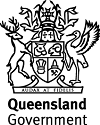Published Monday, 14 January, 2008 at 02:23 PM

Minister for Natural Resources and Water and Minister Assisting the Premier in North Queensland
The Honourable Craig Wallace
MOUNT ISA RESIDENTS HAVE CHANCE TO MAKE THEIR MARK ON THE MAP
Minister for Natural Resources and Water, Craig Wallace, today encouraged Mt Isa residents to become involved in the creation of their community’s history by suggesting new place names.
Minister Wallace is inviting residents to name a geographic feature or area of land by lodging an application with his department.
“The Department of Natural Resources and Water administers the Place Names Act 1994, which controls the official naming of localities, suburbs and geographical features within local government areas,” Mr Wallace said.
“Queensland has over 40,000 official place names and these are constantly being added to by the community,” Mr Wallace said.
“People have a chance to be part of history by creating a new Queensland place name,” he said.
“We do not accept place names that honour living people, we try to avoid duplicating names and commercial names but otherwise people are free to put their mark on the map.”
Some of Queensland’s more unusual names include Baking Board (Chinchilla Shire), Yorkeys Knob (Cairns), Macaroni (Carpentaria Shire), Hell Hole Gorge National Park (Quilpie Shire), Silver Spur (Inglewood Shire), Beer Creek (Esk Shire) and Ginger Beer Creek (Calliope Shire).
Close to 110 new and amended place names were added to the database over the past year.
According to the Department of Natural Resources, and Water's (NRW) place names database, Happy Valley was a shanty town during the depression years, and given its ironic name by the people who lived there.
“If you look up Mount Isa on the website, you will find that the name was first suggested by prospector John Campbell Miles (1883-1965) who pegged the first mineral lease on the silver/lead deposit at Mount Isa in February 1923.
"It is thought that Miles came up with the name using a corruption of Mount Ida, (in Western Australia), a town which reminded him of his friend Moses Rowlands.
Mr Wallace said many of the names on the database were European in origin while others reflected Aboriginal culture and language, or related to the geography of the area.
“There are many interesting names around the Mount Isa area and throughout North Queensland,” he said.
Examples include:
- Barkly River - named on 1 October 1861, by either Frederick Walker or George Austin Woods during their 1861 search expedition for Burke and Wills. The chosen name honoured Sir Henry Barkly (1815-1898), Governor of Victoria 1856-63.
- Lake Moondarra - reportedly an Aboriginal word, of unknown language and dialect, indicating plenty of rain.
- Sunset - named because of its location on the western side of a slope with views of the sunset.
·Hughenden - derived from a pastoral run used in 1862 by Robert Gray and Ernest Henry, who had family connections to Hughenden Manor in England.
·Duchess - derived from a mine name, reported to have been given by Alexander Kennedy, a local pastoralist. The story is that Kennedy called the deposit after Duchess, the Aboriginal consort of St John de Satge, who had run away and sought refuge at Kennedy's Calton Downs station.
Minister Wallace said the place names database reflected the diverse and fascinating background of many of the state’s suburbs and towns.
“While many of the names on the database are European in origin, a large number reflect Aboriginal culture and language,” Mr Wallace said.
Other interesting place names include:
Miallo – an Aboriginal word indicating wild country
Julatten – an Aboriginal word for small creek
Lake Eacham – Eacham is reportedly an Aboriginal word meaning big spring
Lake Barrine – Barrine is a corruption of “barrang”, an Aboriginal word indicating big water.
Malanda – an Aboriginal word indicating the stream known as the Upper Johnstone River, possibly with the connotation little stream with big stones.
Millaa Millaa – a corruption of “millai millai, possibly from the Yindinji language indicating a fruit bearing plant Eleagnus latifolia.
Mr Wallace said people could look up the name of their suburb or town by visiting: www.nrw.qld.gov.au/property/place_names.html
"The place names website is an evolving document and we are always on the lookout for new information about how a suburb, town or land feature got its name."
Media inquiries: Clare Gillic, Minister's Office, 3896 3688
